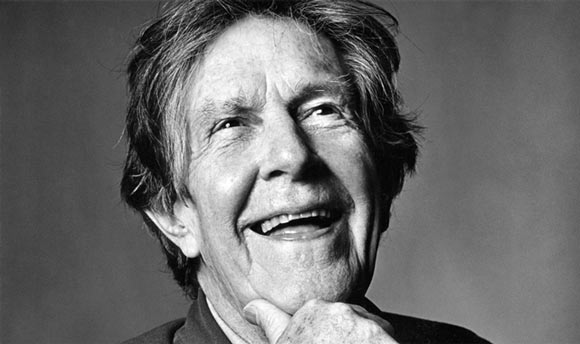
Born on September 5, 1912 in Los Angeles, John Cage can be deemed as one of the most influential and versatile musician, composer, musicologist, artist and writer of the 20th century. He is one of the most infamous figures in the history of music because of his radical yet profound approach towards the subject, that have received rather polarized views throughout time. Not only is he known for such contributions but is also lauded for his sweeping innovations that have revolutionized the face of several musical instruments, techniques and genres.
Music was introduced to Cage early in school, however, it never affected him in a way large enough to sway him, initially he was convinced that he wanted to be a writer. Soon after enrolling in Pomona college he dropped out and went to Europe where he became fascinated with several disciplines; art, architecture and eventually music. His interest and participation in such diverse and reflective disciplines give a lot of insight about him and his work, they are each uniquely reflected in all of Cage’s endeavors. After returning to America, Cage came under the tutelage of several influential musicians and composers; beginning with Richard Buhlig, Arnold Schoenberg and Henry Cowell. The influence of Schoenberg and Cowell can be seen on Cage’s early music in terms of his use of percussion instruments, the 12-tone method and his focus on the structure and organization of the rhythm and pitch.
Cage’s unorthodox philosophy is prominent in all his works that can be characterized by a revolutionizing quality, always ahead of its time and free from the shackles of tradition. Cage worked at several jobs in the 1930s and absorbed something or the other from each of his jobs. During this time he began to experiment with several unusual objects treating each like a musical instrument since he believed that everything possessed its own unique sound and spirit. A rather prominent period in his life came in 1938 when he moved to Seattle and took up a position at Cornish College of Art. Cage’s towering reputation can be attributed to his invention of the prepared piano; this creation is perfectly representative of his ‘out of the box’ kind of thought process. By the end of the 20th century this became one of the most resourceful and intriguing possession for composers.
He moved to New York in 1941 and began focusing on sonatas and interludes which landed him gigs and grants to carry forward his work. His reputation regained its old position in 1951 when Cage put forward yet another astounding technique depicted in his piece named ‘Imaginary Landscape No. 4’. This was based on the principles of chance and it was unique due to its composed spontaneity. Another very controversial and notorious piece was ‘433’, which aimed to break through all the barriers of what defined music since the composition comprised of silence and sounds from the environment rather than conventional instruments.
The 1960s raised John Cage’s fame to an untouched level, he wrote his first book ‘Silence’ and countless number of his scores were published. This era also very clearly depicts his experimental instincts whereby he combined not only different genres but unthinkable mediums together and manipulated technology to its fullest in pieces such as, ‘Environmental Extravaganza Musicircus’ and ‘HPSCHD’. He passed away in New York City on August 12, 1992. Cage’s work possessed an inventive spirit that was often not appreciated in his time or in the future, however, he still left behind an unforgettable legacy and his experimentalism greatly benefited the field of music.